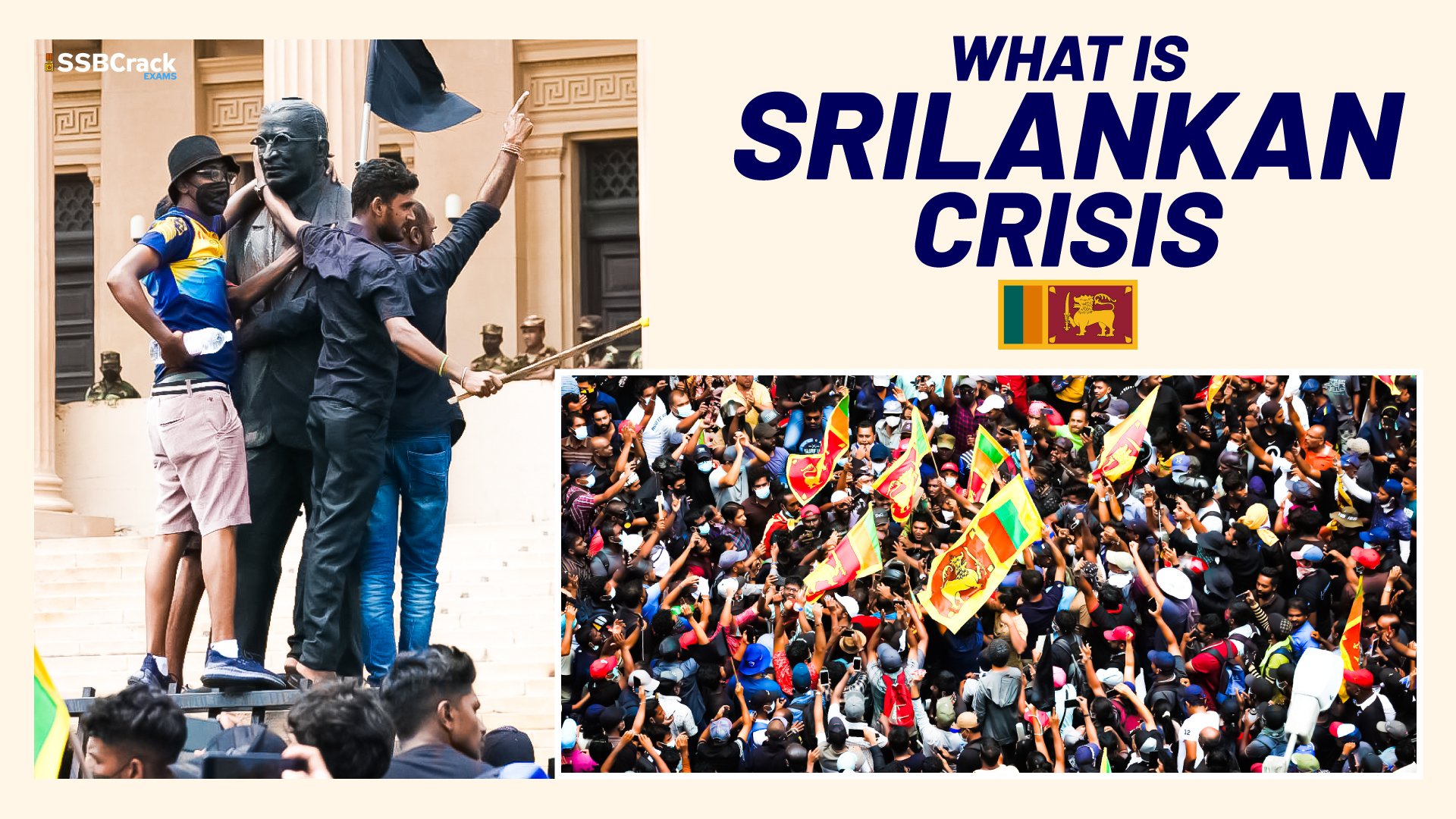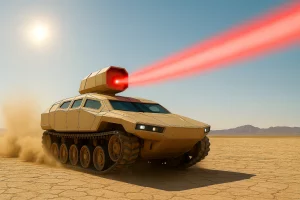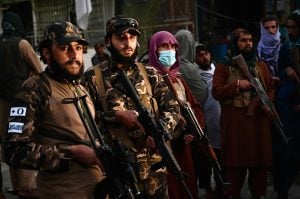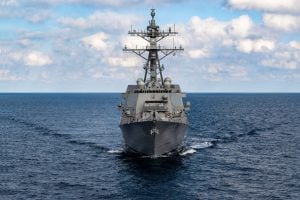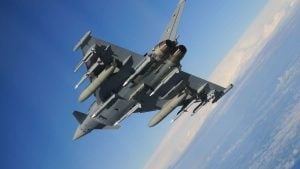The Sri Lankan economic crisis is an ongoing crisis in the island-state of Sri Lanka that started in 2019. It is the country’s worst economic crisis since its independence in 1948. It has led to unprecedented levels of inflation, near-depletion of foreign exchange reserves, shortages of medical supplies and an increase in prices of basic commodities.
The Sri Lankan crisis is said to have begun due to multiple compounding factors like money creation, a nationwide policy to shift to organic or biological farming, the Easter bombings in 2019, and the impact of the COVID-19 pandemic. The subsequent economic hardships resulted in the 2022 Sri Lankan protests.
Why In News?
- Thousands Of Protesters In Sri Lanka’s Commercial Capital Colombo Broke Through Police Barricades And Stormed President Gotabaya Rajapaksa’s Official Residence On Saturday In One Of The Largest Anti-government Marches In The Crisis-hit Country This Year.
- This Came After Reports Of The President Fleeing His Home Surfaced. Some Protesters, Holding Sri Lankan Flags And Helmets, Broke Into The President’s Residence,
Tracing The Genesis Of The Problem:
- 2008: Global Financial Crisis Of Drained Its Forex Reserves Which Led To The Country Borrowing A Loan Of $2.6 Billion Loan From The IMF In 2009.
- 2009: Sri Lanka Emerged From A 26-year-long Civil War.
- 2012: Post-war GDP Growth Till 2012 Was Reasonably High At 8-9% Per Annum.
- 2013: Slump In Global Commodity Prices Hit Hard & Its Average GDP Growth Rate Almost Halved, Exports Slowed Down And Imports Rose.
- 2016: Sri Lanka Again Approached The IMF In 2016 For Another US$1.5 Billion Loan, However, The Conditionalities Of The IMF Further Deteriorated Sri Lanka’s Economic Health.
- 2018: It Took Debt Worth $1 Billion From China. It Also Leased Its Hambantota Port To China Which Helped It To Boost Foreign Currency Reserves And Bridge Its Fiscal Deficit.
- April 2019: Easter Bomb Blasts Of April 2019 In Churches In Colombo Resulted In 253 Casualties, Consequently, Dropping The Number Of Tourists Sharply Leading To A Decline In Foreign Exchange Reserves.
- November 2019: Newly Led Government By Gotabaya Rajapaksa In 2019. Promised Lower Tax Rates And Wide-ranging Sops For Farmers During Their Campaign. The Quick Implementation Of These Ill-Advised Promises Further Exacerbated The Problem.
- 2020: Covid-19 Lock Down, Exports Of Tea, Rubber, Spices, And Garments Suffered. Tourism Arrivals And Revenues Fell Further. Due To A Rise In Government Expenditures, The Fiscal Deficit Exceeded 10% In 2020-21, And The Debt To GDP Ratio Rose From 94% In 2019 To 119% In 2021.
- 2020: In April 2020, China Extended Another $500 Million Loan To Sri Lanka And Has Become The Largest Bilateral Lender And FDI Provider To Sri Lanka. However, The Debt Has Now Become A Total Of Over $2 Billion And Is Due To Be Paid In 2022.
- 2021: Sri Lanka’s Fertiliser Ban Where In All Fertiliser Imports Were Completely Banned And It Was Declared That Sri Lanka Would Become A 100% Organic Farming Nation Overnight. This Overnight Shift To Organic Fertilizers Heavily Impacted Food Production.
- 2022: There Is A Severe Shortage Of Foreign Currency In The Country. The Sri Lankan Government Is Unable To Pay For Essential Imports, Including Fuel.
- This Has Led To Debilitating Power Cuts Lasting Up To 13 Hours.
- Ordinary Sri Lankans Are Also Dealing With Shortages And Soaring Inflation.
- The Country Was Left With Only $2.31 Billion (As Of February) In Its Reserves But Faces Debt Repayments Of Around $4 Billion In 2022, Including A $1 Billion International Sovereign Bond (ISB) Maturing In July.
- Above All, The Russia-Ukraine War Added To The Apathy.
Outbreak Of The Protest:
- On March 31 President’s Home Threatened Hundreds Of Protesters And Rallied. On April 1, A State Of Emergency Was Declared, Troops Deployed, And A Curfew Was Announced. April 4 Cabinet Resigns And President Loses Majority.
- April 18: New Government Formed. On May 9, Mahinda Rajapaksa Resigns As Prime Minister After Violent Clashes. Following By Ranil Wickremesinghe Appointed As New PM.
Support From India:
- A Diesel Shipment Under A $500 Million Credit Line Signed With India Is Expected To Arrive In Sri Lanka Soon.
- Sri Lanka And India Have Signed A $1 Billion Credit Line For Importing Essentials, Including Food And Medicine.
- The Sri Lankan Government Has Also Sought At Least Another $1 Billion From New Delhi.
Way Forward For Sri Lanka:
- Take Immediate Measures For Economic Recovery
- Make Sure Shortage Of Certain Essential Commodities Ends
- Join Hands With The Tamil Political Leadership To Create A Roadmap For The Economic Development
- Raise Domestic Tax Revenue
- Shrink Government Expenditure
- Limit Borrowing, Particularly Sovereign Borrowing From External Sources
To join Indian Armed Forces as an Officer and crack the SSB interview, You can join our SSB interview live classes batch and we recommend you to Enroll SSB INTERVIEW ONLINE COURSE. Trusted by thousands of defence aspirants.
Also Read:
- 20 Latest National News Asked In SSB Interview – June 2022
- 20 Latest International News Asked In SSB Interview – June 2022
- What Is The BIMSTEC Grouping And How Is It Significant? [EXPLAINED]
- What Is The Places Of Worship (Special Provisions) Act, 1991? [Explained]
- What Is Bodo Accord | SSB Interview Notes [Fully Explained]
- What Is AFSPA: Armed Forces (Special Powers) Act?
- What Is G20 Or Group Of Twenty Countries?
- What Is AFSPA: Armed Forces (Special Powers) Act?
- What Is The Financial Action Task Force (FATF)? [Fully Explained]
- What Is Quadrilateral Security Dialogue (QUAD)?
- Difference Between NATO Vs Russia [Expained]
- What Is United Nations Security Council (UNSC) [Explained]
- Everything You Need To Know About SAARC: South Asian Association For Regional Cooperation
- All About Russia Ukraine War: SSB Interview Topic [Fully Explained]
